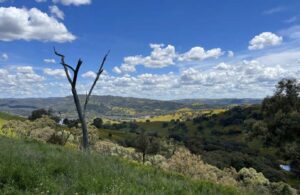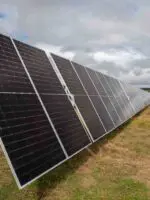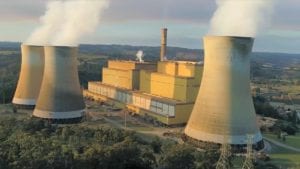Western Australia is set to capitalise on the rapid expansion of demand for battery storage, both for electricity and electric vehicles, with a surge in exploration activity for the raw materials used in battery production.
The mineral-rich state has been seeking ways to bolster the strength of its mining sector, which provides the vast majority of the state’s export revenues.
Western Australian energy minister Bill Johnston has revealed that one-third of new mining exploration projects seeking support under the Government’s Exploration Incentive Scheme are searching for new reserves of battery materials.
Under the scheme, the Western Australian Government provides mining firms with grant of up to 50% of the exploration costs, with available funding ranging from $30,000 to $200,000, depending on the scale of the project.
Western Australia is making significant efforts to capture the benefits of a boom in battery demand, which has been driven by falling costs for batteries used as energy storage and in electric vehicles, and has provided additional support for the development of a battery industry within the State.
In February, the McGowan Government unveiled its Future Battery Industry Strategy, which is targeting support for the development of the state’s lithium, nickel, cobalt, manganese and alumina resources.
Analysts, including Bloomberg New Energy Finance, have projected astronomical increases in demand for raw materials for battery production, driven by growth in energy storage and electric vehicle sales.
This opportunity was echoed by solar PV research pioneer and UNSW Scientia Professor, Martin Green who told ABC’s RN Breakfast on Friday that the shift towards renewable energy and energy storage will be a positive opportunity for the resources sector.
“If you look at it more globally, the amount of solar that you would need to install to significantly displace the use of coal, would actually do wonders for our resource industry, by creating demand for our other exports. Particularly iron ore, copper, aluminium, as well as all these new battery materials like nickel, cobalt and lithium that would be needed in greater quantities.” Green said.
He also noted that the potential value of increased demand in metallurgical coal, used for steel making, could offset the loss in export sales from the more highly polluting thermal coal, used in electricity generation.
This battery market is definitely the focus of the W.A. government, particularly given the state’s dependence on mining revenues, and the likely upheaval the resources sector will undergo during a transition away from fossils.
“The sharp rise in popularity of battery materials among explorers underscores the importance of the McGowan Government’s Future Battery Industry strategy.” Johnston said in a statement.
“We’re pleased that this round reflects such a varied mix of new-energy and traditional exploration projects.”
“The EIS program has resulted in major discoveries, with more being made each year, all of them increasing the odds of opening new mines and creating jobs.”
A total of 45 companies have received funding under the latest round of the incentive scheme, with a total of $5.12 million in grants being awarded.
The new projects will undertake exploration activities in search of new deposits of lithium, nickel, cobalt and other rare-earth materials.
The increased interest in materials to supply the production of batteries mirrors the opportunities BHP has recognised in its recent strategy briefing on the future direction of the resources giant. BHP sees the shift towards clean energy technologies, and away from thermal coal, as a positive opportunity to develop its investments in nickel and copper.
The announcement also follows the recent establishment of an Energy Transformation Taskforce by the Western Australian Government.
The taskforce will be chaired by former Horizon Power chairperson Stephen Edwell, and will implement the McGowan Government’s Energy Transformation Strategy, including the development of a Distributed Energy Resources Roadmap.
The Distributed Energy Resources Roadmap will examine how the barriers to grid connection and participation in the energy market can be addressed for emerging clean energy technologies.
The Western Australian Government has faced criticism for its lack of targets for renewable energy uptake, and has avoided setting a target for rooftop solar installations. The rapid expansion of the State’s resources industry in response to growing demand from the clean energy sector highlight the opportunities that a transition away from fossil resources can generate across the whole of Australia.











